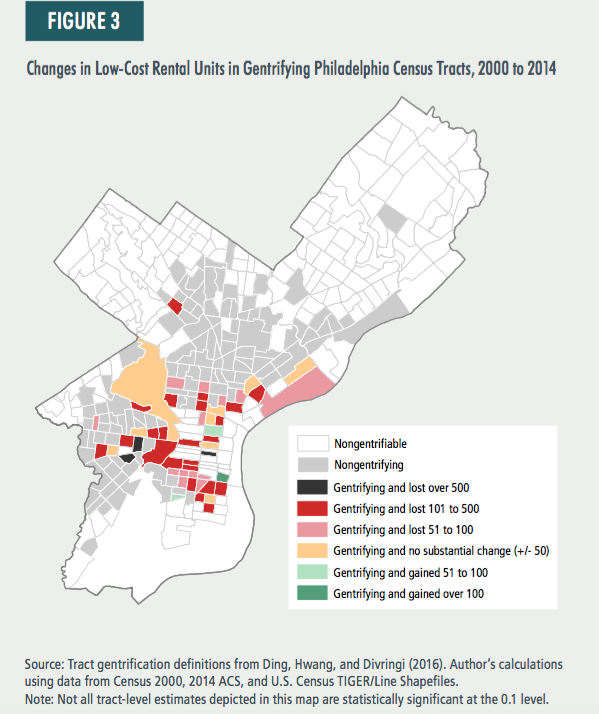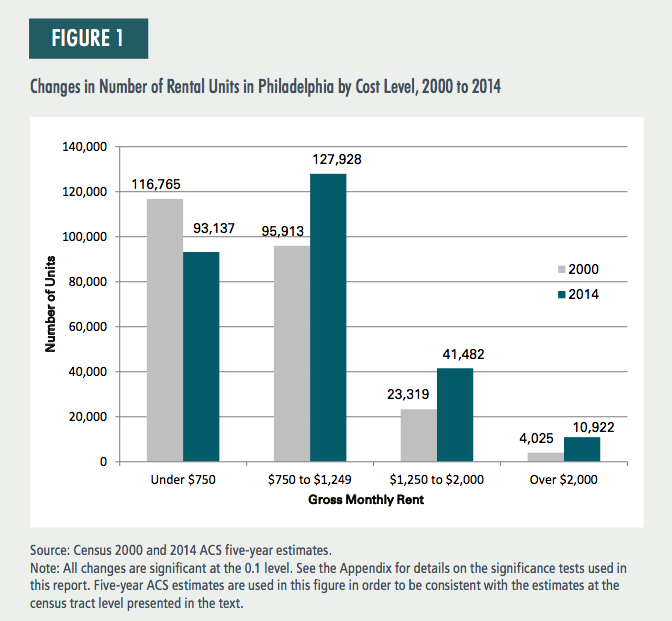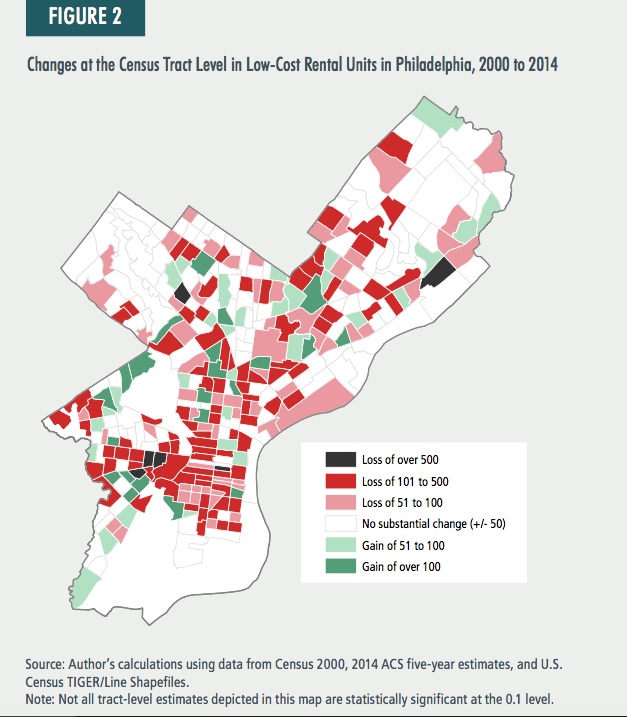
December 19, 2016
A pattern of gentrification in many of Philadelphia's neighborhoods has resulted in the city losing a full fifth of its affordable rental housing units priced at $750 or below, according to a new report from the Federal Reserve Bank of Philadelphia.
The study, which relied on U.S. Census Bureau data between 2000 and 2014, works with the following overall definition of gentrification:
Gentrification occurs when an initially low-income central city neighborhood experiences an influx of new residents of a higher socioeconomic status than the incumbent residents. The increased demand for housing from more economically advantaged in-movers leads to higher housing prices, which increase housing cost pressures on existing vulnerable residents and make the neighborhood less accessible to lower-income in-movers.
During the period in question, researchers found that the trend away from affordable units — despite Philadelphia's comparative affordability relative to other big cities — occurred alongside a significant growth in rental demand. Between 2000 and 2014, the total number renter households increased by 15.3 percent in Philadelphia.
At the same time, between 2005 and 2014, the number of affordable units for every 100 lower-income renters fell from 82 to 68, where $750 in gross rent is defined as the affordabilty threshold for households earning at least $30,000 per year. The citywide median gross rent in Philadelphia was $936 in 2014, while the median household income of Philadelphia renters was $28,726.
Changes in Philadelphia rental stock (2000-2014).
Census tract level losses of affordable housing (2000-2014)
Philadelphia’s loss of low-cost rental units would be less concerning if households experienced a corresponding increase in income, allowing them to afford more expensive units. But incomes of renters in Philadelphia have not kept pace with rising rents. While the city’s median gross rent increased by nearly 20 percent between 2000 and 2014, the median renter income fell by 2 percent.
In gentrifying neighborhoods with household incomes below the citywide median in 2000, the rate of affordable housing loss was higher than other parts of the city.
Changes in gentrifying neighborhoods (2000-2014).
"With a growing body of research highlighting the influence of neighborhood characteristics on residents’ economic outcomes, these trends merit serious consideration from policymakers concerned with community inclusivity and economic mobility."
 Source/Federal Reserve Bank of Philadelphia
Source/Federal Reserve Bank of Philadelphia  Source/Federal Reserve Bank of Philadelphia
Source/Federal Reserve Bank of Philadelphia